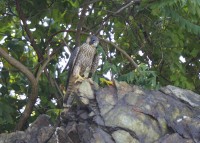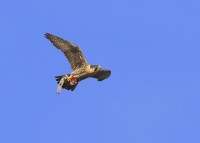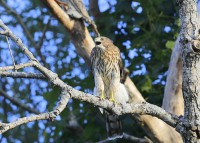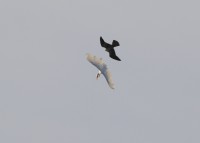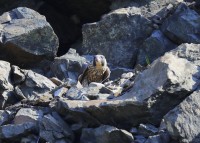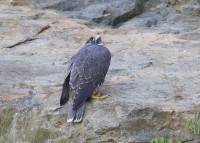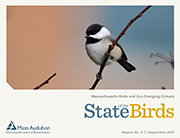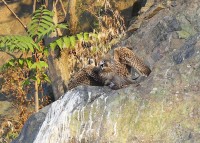 Another early morning visit yesterday with John Harrison to watch the peregrine falcons in Woburn. Upon arrival the adult male was perched to the east of the nest ledge, and at a bit of a higher elevation. Around 6:30 AM, the female and fledgling came streaking in from the east. The female had prey in her talons and was likely making a food transfer. After lots of noise, commotion, and a few aerial chase loops, the female landed on a regular perch to the west of the nest ledge with a mourning dove in its tight grasp.
Another early morning visit yesterday with John Harrison to watch the peregrine falcons in Woburn. Upon arrival the adult male was perched to the east of the nest ledge, and at a bit of a higher elevation. Around 6:30 AM, the female and fledgling came streaking in from the east. The female had prey in her talons and was likely making a food transfer. After lots of noise, commotion, and a few aerial chase loops, the female landed on a regular perch to the west of the nest ledge with a mourning dove in its tight grasp.
The delivery of food to young falcons changes after they fledge. Research by Steve Sherrod suggests 5 types of general food transfers. These range from perched transfers to aerial transfers to dead drops and even live drops!
We had a nice opportunity to observe a classic perched food transfer. The female flew in and landed on a perch with a freshly caught Mourning Dove. The fledgling then flew in, landed on the same same perch and quickly grabbed the dove. Shortly after the female departs. The fledgling waited about 11-12 minutes before starting to pluck the prey. It vocalized loudly, as if to complain that the meal needed to becut up into smaller bite-sized pieces…..as if asking “do I have do this all by myself?”
The fledgling spread its wings, mantled the pray for a bit, and then began eating. It finished with the legs and feet going down the hatch!
For those with an interest, 9 documenting photos of perched food transfer sequence posted:
http://www.pbase.com/birdshots/image/163712112
Click “next” in upper right to advance frames….

